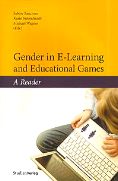 SecondLife itself is stirring up the blogosphere since LindenLab claimed to have passed the 1 Mio-Users-Milestone. Attention is also drawn to SL by the scientific community, e.g. from the Virtual Human Interaction Lab of the University of Stanford, CA/US. Graduate Student Researcher Nick Yee (brief bio) together with other researchers presented a paper entitled „The Unbearable Likeness of Being Digital: The Persistence of Nonverbal Social Norms in Online Virtual Environments.“ (download as PDF). In this paper several interesting findings are proclaimed which I will try to discuss here now. One of them raised some criticism: Yee proclaims, that
SecondLife itself is stirring up the blogosphere since LindenLab claimed to have passed the 1 Mio-Users-Milestone. Attention is also drawn to SL by the scientific community, e.g. from the Virtual Human Interaction Lab of the University of Stanford, CA/US. Graduate Student Researcher Nick Yee (brief bio) together with other researchers presented a paper entitled „The Unbearable Likeness of Being Digital: The Persistence of Nonverbal Social Norms in Online Virtual Environments.“ (download as PDF). In this paper several interesting findings are proclaimed which I will try to discuss here now. One of them raised some criticism: Yee proclaims, that
If people behave according to the same social rules in both physical and virtual worlds even though the mode of movement and navigation is entirely different [..], then this means it is possible to study social interaction in virtual environments and generalize them to social interaction in the real world.
A poweruser of SL, Fiend Ludwig (seems to be his SL-Identity) wrote an article about the beforementioned paper of Yee’s group which was published in the Second Life Herald – a news mag, which writes about SL – and contains some interesting information. Fiend criticizes the published paper in many regards through his article „Eavesdropping in SL – The Unbearable Weight of Erroneous Assumptions“. The basic points will be listed now here [Accentuation added by myself!]:
- Of the five variables gender, interpersonal distance, mutual gaze, talking, and location only interpersonal distance and location can be accurately measured observing avatars while they communicate.
- Yee’s conclusions based on avatar gender and their relationship to real world observations are invalid, because gender cannot be figured out in the end.
- The mutual gaze measurements are also problematic because user attention is usually directed to the UI chat window anyway.
- To regard two avatars who are standing adjacent to one another as chatting with each other only in case if they are showing the typing animation may be misleading, because these may indeed be chatting because the keystroke-animation might be overridden by a replacement-animation.
- Yee excluded dyads that were observed as being more than 3.7m apart [AFAIK: The proxemic distance defined by E.T. Hall], as this was shown in real world studies to be the distance further than which social interaction does not occur, but in SL one can zoom the field of sight towards targets across long distance using the avatar’s camera without moving the avatar itself, which allows for chatting across long distance, also the use of SL instant messaging will bypass usual chatting and is usually invisible to any external observation
Fiend therefore concludes:
There may be patterns of social interaction observable in Second Life, these patterns may give the observer some insight into the behavior of avatars, and this insight may lead to generalization about the social norms of virtual online environments as a whole. But, without detailed information about the people who are driving these virtual interactions, drawing parallels between real world norms and observed ‚virtual norms‘ seems both erroneous and premature.
From my personal view, Fiend is right, but at the same time Yee did not claim to have found the ultimate truth and he points out several limitations of his study. What seems to be more interesting to me is the fact, that people behave in SL according to the same social rules as in real life. This has huge impact in regard to the design, development and testing of future software i.e. social software applications. Future development of applications need to take into account that networked multiuser-applications – like e.g. Google-Spreadsheets – are affected in their use by social rules which are working behind the scenes though this place seemed to be pretty non-social until now. But this in the end is not at all that surprising: To design software which fits to the task and the needs of humans was a target for development all the time. It also does not seem that surprising, people carry their behaviour patterns over to SL. this is true I think for any different cultural environment we enter, we always take ourselves with us. This means our habits, experiences and the complete history we run through.
Update 24.2.2007 23:55 Uhr
This question was also discussed on the Terra Nova site in detail in the thread named „The Prison of Embodiment“ which was started by Nick Yee himself. So much of the discussion around these findings can be found over there. (Thanks to Fiend Ludwig who gave this link in the SLH thread).
Update 8.3.2007
Regarding the issue of gender-guessing in virtual contexts a nice discussion can be found in a blog-post called „The Turing Game (Amy Bruckman)“ on misbehaving.net.
misbehaving.net is a weblog about women and technology. It’s a celebration of women’s contributions to computing; a place to spotlight women’s contributions as well point out new opportunities and challenges for women in the computing field.
[ Regard the blockquote above as my contribution to IWD (International Women’s Day 2007) ;-) ]
Update 29.5.2013
Another interesting thesis about this subject can be found at named Self-construal and interpersonal distance (full PDF in german language) by author Ute-Regina Roeder.
Why do I blog this? Yee and his group did research questions which are also very viable for my current work, though I did not do any research in a 3D or 2.5D virtual worlds but instead in a „Flat-Screen-2D-World“ of Business Applications. Having read the paper I will try to find out where I can do better than they did in the aspects which were criticized by Fiend Ludwig’s article in the Second Life Herald.

 Eine Frage, bei der man mit einem Test vielleicht weiterkommt. Die
Eine Frage, bei der man mit einem Test vielleicht weiterkommt. Die  Auch die Uni Bremen bietet gerade jetzt, wo einige Ihr Abitur gerade beendet haben einen ca. 90 Minuten dauernden
Auch die Uni Bremen bietet gerade jetzt, wo einige Ihr Abitur gerade beendet haben einen ca. 90 Minuten dauernden  Ein neuer Beitrag meines Chief-in-Power ist erschienen in Buchform: „Gender Mainstreaming of E-Learning Courses: Theoretical Review, Design Considerations, and Usage Differences“ lautet der Titel seines 23 Seiten umfassenden Beitrags in dem neu erschienen Reader zu
Ein neuer Beitrag meines Chief-in-Power ist erschienen in Buchform: „Gender Mainstreaming of E-Learning Courses: Theoretical Review, Design Considerations, and Usage Differences“ lautet der Titel seines 23 Seiten umfassenden Beitrags in dem neu erschienen Reader zu